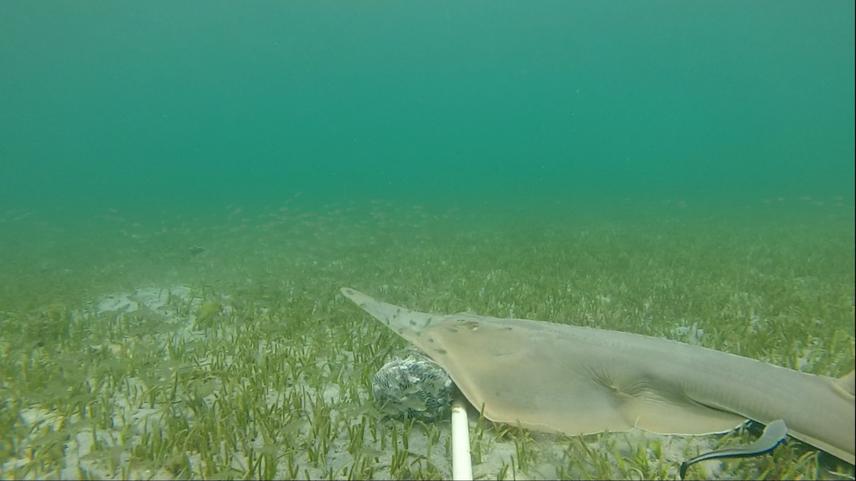Evan Nazareth
Guitarfish are the most threatened and poorly known elasmobranches, which includes sharks and rays. In recent years we have witnessed a global decline in guitarfish populations as a result of overfishing. In the Andaman Islands guitarfish are targeted for their fins which have a high value in foreign markets.
This project will address the lack of information available on the life history of the Critically Endangered Sharpnose guitarfish (Glaucostegus granulatus) by studying them in potential nursery sites. In addition we will conduct the first species-specific status assessment of this species from the waters surrounding the Andaman Islands.
The identification of nursery areas can serve as a basis for conservation planning and setting focused management measures. By recognising the significance a particular habitat can play in determining the health of a population it is more effective and practical to concentrate conservation efforts on these vital habitats.

Guitarfish spotted during BRUV survey
This project is unique due to its geographical location and the species of interest. It is also the first project in India that will focus on elasmobranch nurseries and use methods such as tagging and mark recapture to study juvenile Sharpnose Guitarfish in their habitats. Data will be collected from landing sites in the south Andaman region to collect information on the impact of fisheries on the Sharpnose Guitarfish. In addition, through habitat surveys in nearshore locations, we will determine which habitats are being used as nursery grounds by this species and the driving factors behind this.
The results of this study will provide a foundation data-set on the population status of this species and improve our understanding of the benefits coastal habitats provide to juvenile Sharpnose Guitarfish in terms of growth rates, habitat selection, and protection from predation.
This project will serve as a foundation upon which we will develop future projects to further our understanding of sharks and rays, their nurseries as well as their ecological roles in the hope that this will eventually help us conserve them and the habitats they depend on.
These data will support and inform future conservation initiatives to protect the Sharpnose Guitarfish as well as the habitats they depend on. Because these habitats host vast seagrass beds which are known to serve as nurseries and important habitats for a plethora of marine organisms, their protection has conservation implications that extend beyond a single species.